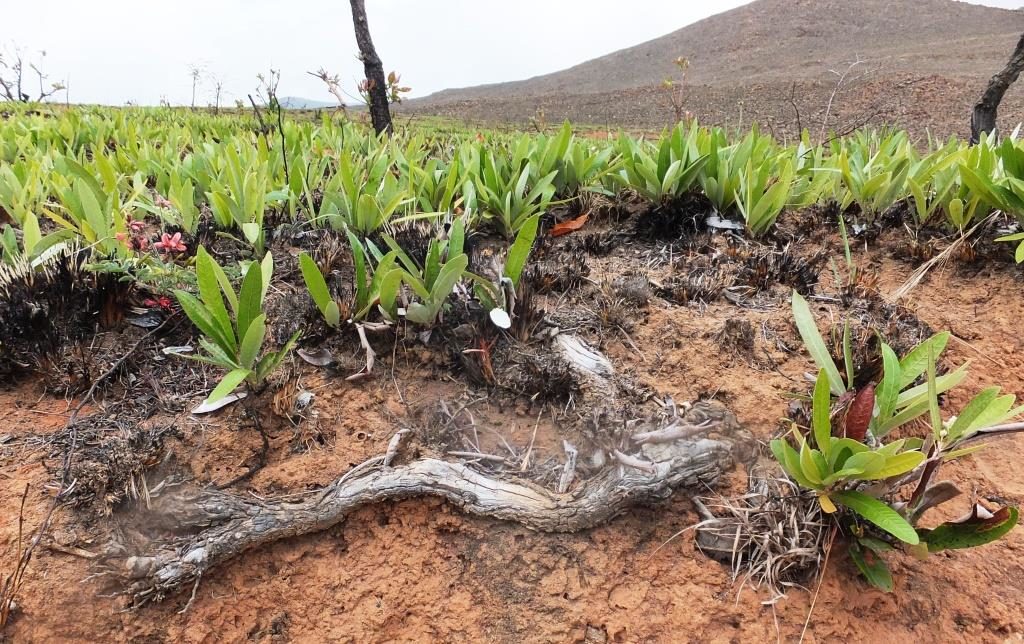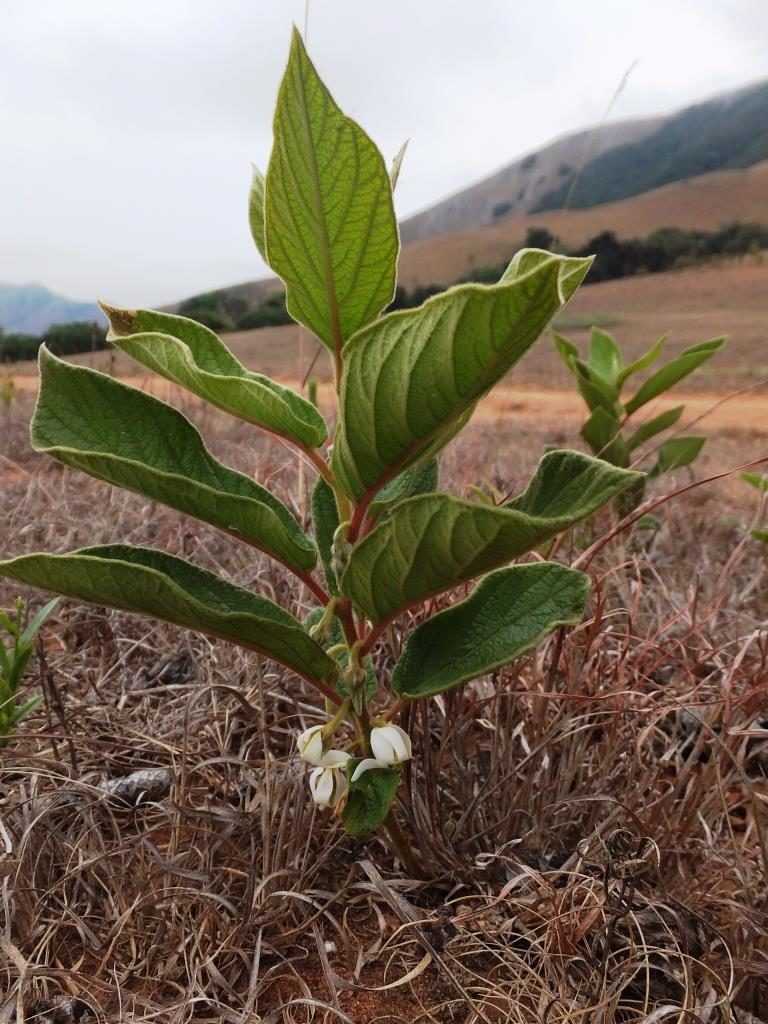
Parinari capensis subsp. capensis. The leaves form dense carpet-like ‘forests’ in the grasslands and are very visible at the beginning of spring and especially after a fire. One of the “branches” that will usually be underground sticks out in front.
Imagine Tarzan’s confusion if you show him an underground tree; let alone an underground forest. Instead of swinging through the branches clutching sweetheart Jane in one arm while making his characteristic victory yell, he will have mouths full of soil while digging like a mole.
Now what will an underground tree (geoxyle) look like, you may ask? Well for one, it does not have a long trunk like an above ground tree and attain only a fraction of the height of a sister with a trunk. However,they do have sister species that are forest or savanna trees with proper trunks. A geoxyle suffrutice is not a bonsai as the “canopy” of some trees can take up a fair amount of space and can thus create “forests” of leaves on the ground. It has a woody structure that occurs underground and only the twigs with leaves stick out above ground while others may look like herbs or small shrubs.
Underground trees is an African phenomenon that is characteristic of fire-prone savannas and grasslands with high precipitation. One may argue that high rainfall should favour the development of forests instead of grasslands. But, research shows that higher levels of precipitation correlates with high grass productivity. And more grass favours frequent fires which result in maintaining the savanna state and it can also result in trapping tree saplings preventing them from growing into mature trees. Regular fires, soil conditions and high rainfall are often considered the driving forces behind the evolution of these growth forms and scientists argue that geoxyles are trees that have adopted a dwarf growth form in order to survive. Being underground has a significant advantage because these trees are considered to be quite indestructible. With the majority of the trees underground they can withstand above ground pressures such as grazing and fires and they are drought resistant with speculation that they may reach thousands of years in age – super trees indeed.
The grasslands of Mountainlands are home to several species, of which the more visible ones are Parinari capensis subsp. capensis, Lannea edulis var. edulis and Diospyros galpinii.

Diospyros galpinii (Dwarf star-apple) has multiple shoots produced from its underground structure and the simple branches give the impression that it is singular shrubs standing in the grasslands.

Lannea edulis var. edulis (Wild grape) grows up to about 30cm high in the rocky grassland. The fruit are edible but not very tasty.
To learn more: https://repository.up.ac.za/bitstream/handle/2263/49453/Maurin_Savanna_2014.pdf?sequence=1
